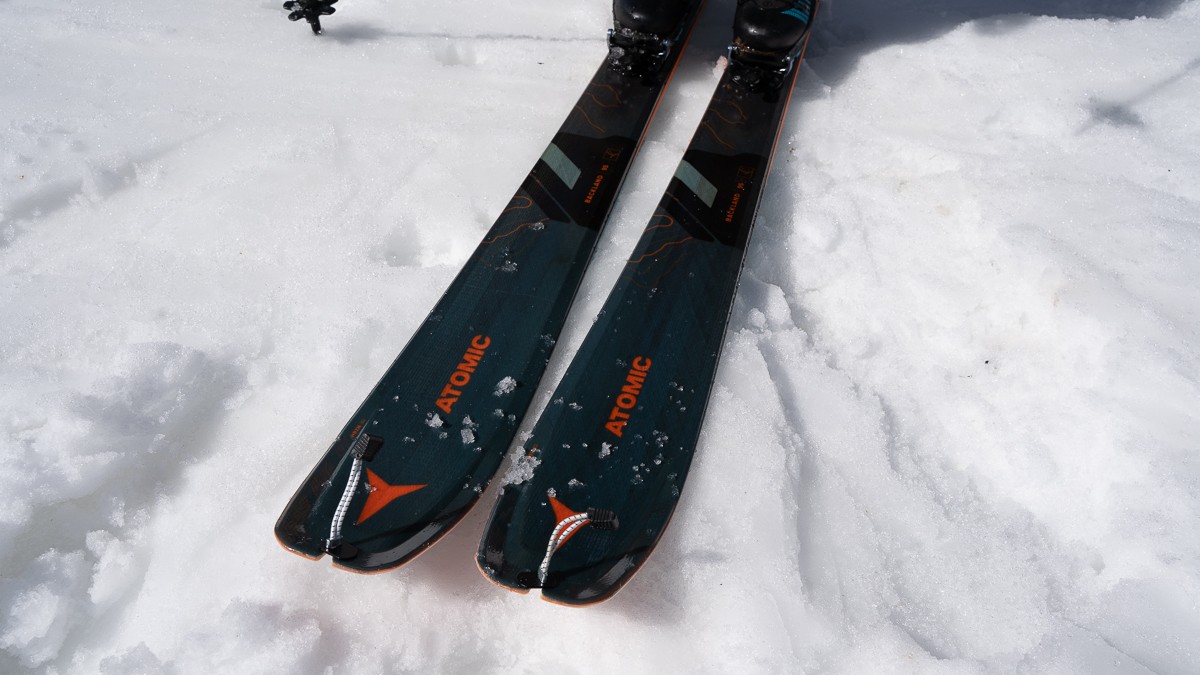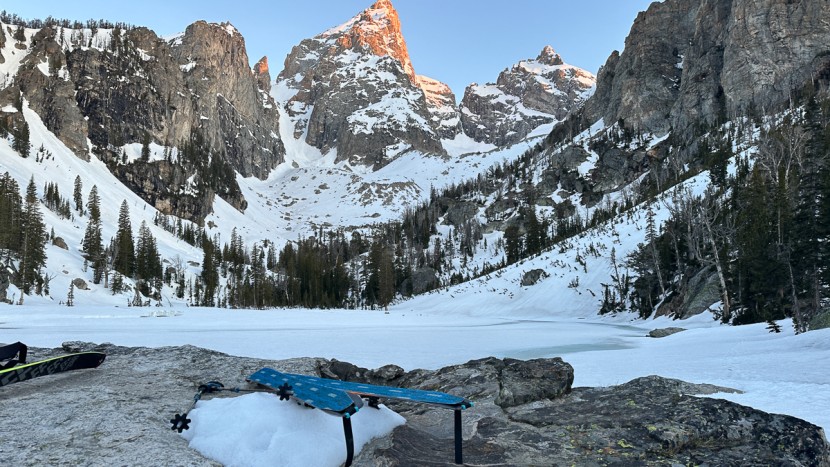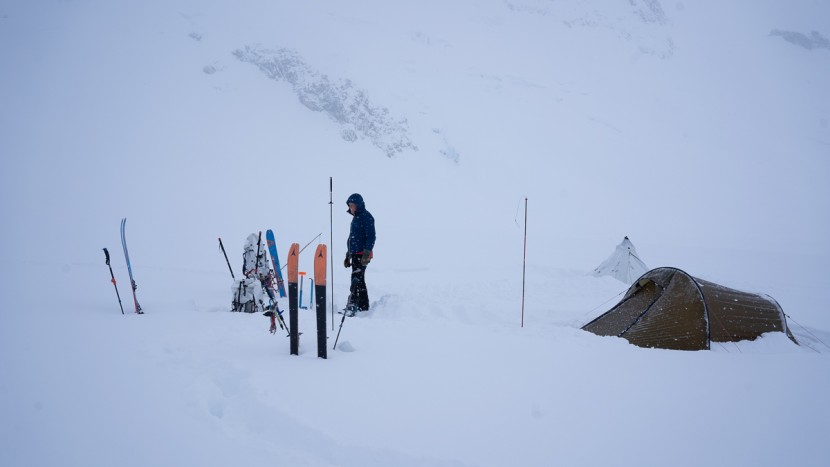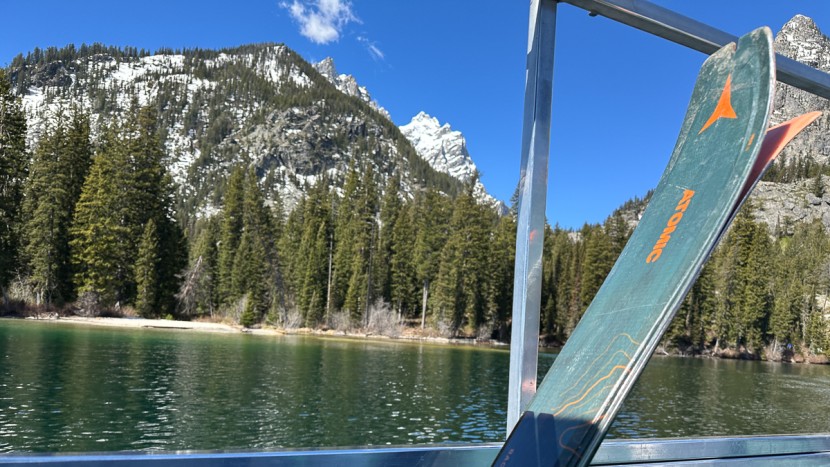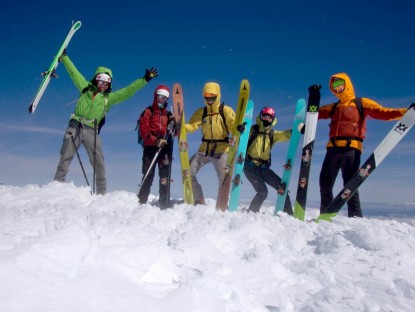Our Verdict
Compare to Similar Products
 This Product
Atomic Backland 95 | |||||
|---|---|---|---|---|---|
| Awards | A Realistic Backcountry Ski | Optimized for Downhill Performance | Best Overall Backcountry Skis | Best Bang for the Buck | |
| Price | $900 List $599.97 at Amazon | $639.96 at Evo Compare at 2 sellers | $719.96 at Amazon Compare at 3 sellers | $800 List | $469.95 at Amazon Compare at 2 sellers |
Overall Score  |
|||||
| Star Rating | |||||
| Bottom Line | If you have a truly wide-ranging ski habit and have realistic expectations of what you will find out in the mountains, consider these skis very closely | Heavier skis that offer meaningful performance on the downhill, ideal for newer backcountry skiers or for experts who don't mind trading a bit of efficiency for a bit more fun | This relatively wide all-season ski is one of our favorites and great for all-around human-powered use | Reasonably affordable and great for a wide range of human-powered skiing, these are your backcountry "quiver-of-one" | Skis optimized for downhill performance across many circumstances and skillsets, but you'll pay a price in weight |
| Rating Categories | Atomic Backland 95 | Salomon QST Echo 106 | Blizzard Zero G 105 | K2 Wayback 106 | Elan Ripstick 106 |
| Weight (25%) | |||||
| Firm Snow (20%) | |||||
| Powder (20%) | |||||
| Crud and Poor Snow (20%) | |||||
| Stability at Speed (15%) | |||||
| Specifications | Atomic Backland 95 | Salomon QST Echo 106 | Blizzard Zero G 105 | K2 Wayback 106 | Elan Ripstick 106 |
| Measured Weight Per Ski (g) | 1422.5 | 1779 | 1513 | 1436 | 1858 |
| Measured Length Tested (cm) | 175 | 180 | 178 | 179 | 177 |
| Measured Waist Width (mm) | 94 | 105 | 105 | 105 | 106 |
| Weight Per Surface Area Ratio (g/cm²) | 0.73 | 0.8 | 0.72 | 0.68 | 0.86 |
| Measured Weight Per Pair (g) | 2845 | 3557 | 3025 | 2872 | 3715 |
| Measured Weight Per Pair (lbs) | 6.3 | 7.8 | 6.7 | 6.3 | 8.2 |
| Manufacturer Claimed Length (cm) | 177 | 181 | 180 | 179 | 180 |
| Available Lengths (cm) | 161 ,169, 177, 185 | 157, 165, 173, 181, 189 | 164, 172, 180, 188 | 165, 172, 179, 186 | 167, 174, 181, 188 |
| Measured Dimensions, Tip/Center/Tail (mm) | 126/94/114 | 140/105/125 | 133/104/118 | 131/105/120 | 143/105/119 |
| Manufacturer Claimed Dimensions (mm) | 128/95/116 | 136/106/126 | 133/105/119 | 132/106/121 | 143/106/120 |
| Turn Radius (m) | 18 | 19 | 23 | 22.3 | 19.5 |
| Construction Type | Semi-Cap | Sandwich | Sandwich | Semi-Cap | Sandwich |
| Core Material | Poplar | Poplar, Caruba | Paulownia | Paulownia | Tubelite |
| Rocker/Camber Profile | Tip and tail rocker, camber underfoot | Tip and tail rocker, camber underfoot | Tip and tail rocker | Tip and tail rocker, flat underfoot | Tip and tail rocker, camber underfoot |
Our Analysis and Test Results
Our commentary on the Atomic Backland 95 is as much an assessment of this particular ski as it is a summary of the state of the backcountry ski industry. We should all be shopping for and carefully comparing skis exactly like this one because this is the type of ski that will serve you well for most of the backcountry skiing you do. Even though it isn't the best ski of its kind, we like the Backland 95 for its versatility and broad appeal, especially for firm snow conditions in mid-winter and wild, steep skiing in the spring.
Weight
On our calibrated scale, each ski we tested weighed 1430 and 1415 grams, respectively, for an average of 1423 grams per ski. That works out to 2845 grams for the pair, equivalent to 6.3 pounds. This weight is squarely in the important part of the range of backcountry ski weights – not too heavy for the up and just enough oomph for the downhill.
In the past, we have tested skis that weighed 100-150 grams less than the Backland 95 yet performed about the same. To get meaningfully better downhill performance, you'd have to add 200+ grams – or about 1/2 pound – to each ski, which just isn't worth the burden. There are other skis we tested that come close to the downhill performance of the Backland 95 yet shave 100-200 grams. Although we wish these skis were a bit lighter, we have no reason to complain; they strike a good balance for an everyday backcountry ski.
Firm Snow
The Backland 95 really shines in all the flavors of firm snow in the backcountry. Edge hold is solid and balanced, and through hop turns in steep terrain, tips nor tails grab more than the other. Few other skis in our test offer the versatility and confidence in the conditions most of us actually encounter in our impassioned pursuit of all-around backcountry skiing.
We also trusted these in serious terrain, notably on a late-season descent of Mount Owen in the Tetons. On that day, we tackled 5000 vertical feet of all the flavors of hard snow on the Backland 95 and had an excellent time doing so. Even with tired, clumsy technique at the end of a long ski day, our testers found that these skis always brought them back to center.
Powder
Firm snow and powder snow performance likely seem like polar opposites. This may be true as far as surface conditions go, but as it pertains to ski performance, our test team wants to assure you that isn't the case. A well-rounded ski can, in fact, perform well on firm snow and in powder. Bigger ski dimensions enable faster, less strenuous powder skiing, but the relatively narrow waist of the 95-millimeter-waisted Backland 95 does not take away from that special powder experience.
Notably, our lead test editor chose to take the Backland 95 for a spring expedition to British Columbia's Waddington Range. In that time and place we expected mainly firm snow conditions. However, we landed on the glacier just after a huge, cold storm and got a few days of spectacular, deep powder skiing before wind and warmth set in. We certainly weren't disappointed with the dominant snow conditions nor with our ski choice.
Crud and Poor Snow
You will encounter difficult snow conditions in the backcountry, especially if you are determined to ski for the extent of a full season. We experience a whole variety of snow conditions in the wild. In the most popular, tracked-up locations, you might find choppy, chunky snow that a resort skier would label as poor. Yesterday's avalanche debris, especially refrozen debris in the spring, is an even worse form. But on most days, tough snow is apt to be either breakable crust or, in the spring, sloppy “mashed potatoes.”
When it comes to skiing these more challenging types of snow, the Backland 95 does fine, but it doesn't have the heft of a burlier ski to power through. If we had to rank how well this ski performs in poor snow conditions, it would do better on chunky, firm snow than mashed potatoes, and it would seem to have the most trouble in breakable crust. No skiing is fun in these conditions. But with solid technique and patience, the predictable, centered behavior of the Backland 95 will get you through.
Stability at Speed
We'll be blunt here: don't pick these skis for maximum speed. Instead, choose them for maximum versatility. Don't get us wrong; they will go fast, but not as fast as other skis we tested and not in all conditions. Rail away on corn snow. Let it rip on that shallow powder and “dust on crust.” But reel it in once the slope gets steeper or the snow gets heavier.
Steep terrain isn't the place to let these run, nor will you feel confident lengthening the turn radius in powder snow. The balanced intention of the Backland 95 inherently compromises on speed, especially if you're used to heavier resort skis. Backcountry skiing is a high-consequence activity at baseline. Increasing your speed only increases the consequences of crashing, so we're okay with taking it a bit slower.
Should You Buy the Atomic Backland 95?
Yes – put these on your short list of all-season, “quiver-of-one” backcountry skis. They are serviceable in every conceivable snow condition you might face and optimized for firm snow, which you will realistically always encounter. As an added bonus, the notched tips make the Backland 95 compatible with a wider variety of skin types. (This shouldn't be the main reason you buy them, but it is a no-cost perk that we wish more skis included.)
What Other Backcountry Skis Should You Consider?
As a slightly more robust alternative to the Backland 95, the Black Crows Camox Freebird is able to better handle difficult snow conditions. We confess that our expert test team – residing in the powder-rich Rocky Mountain and Intermountain band of sparsely inhabited ski towns stretching from Durango to Driggs – exerts an influence on our selection. Many of the skis we have tested are wider than 100 millimeters underfoot and are not directly comparable to either of these firm-snow specialists. If you are looking for a slightly wider pair of skis that will hold an edge on firm snow but that you can let loose on powder days, the Salomon QST Echo 106 is fine-tuned for the downhill.


